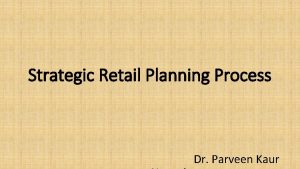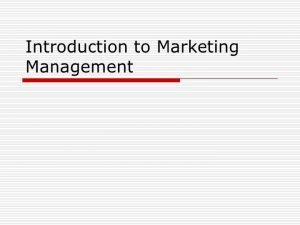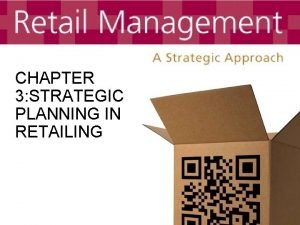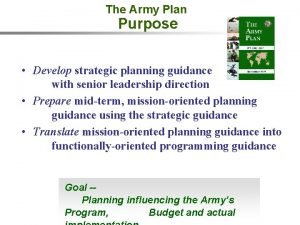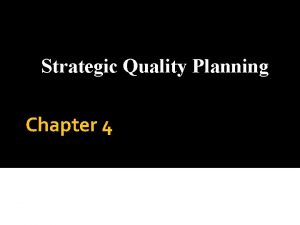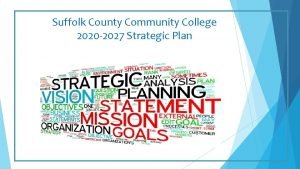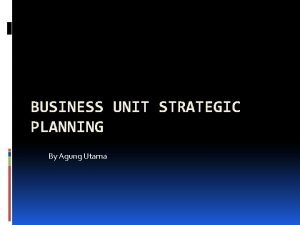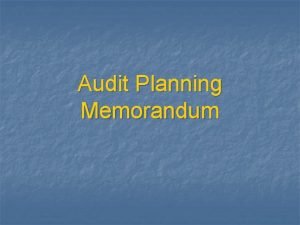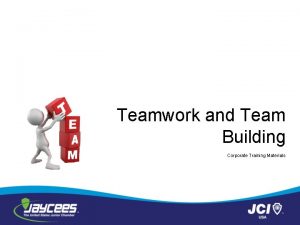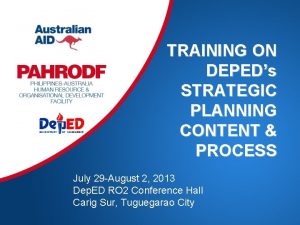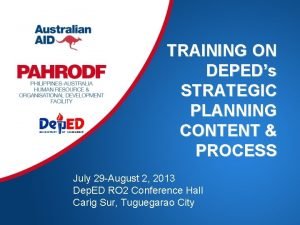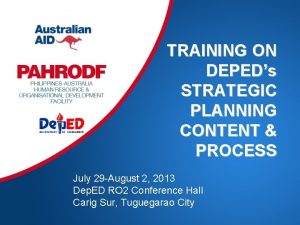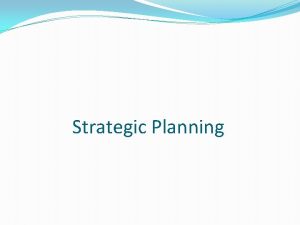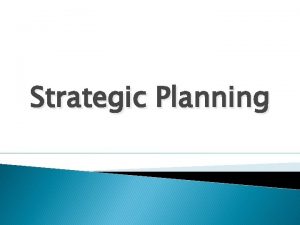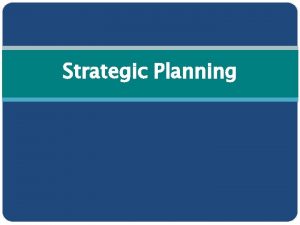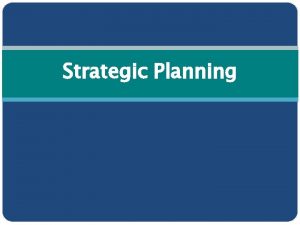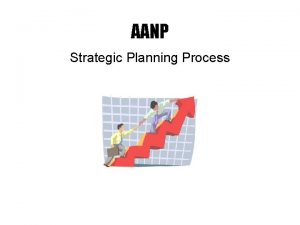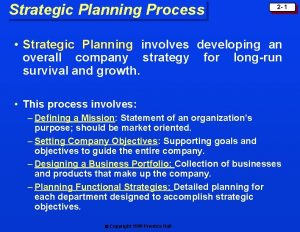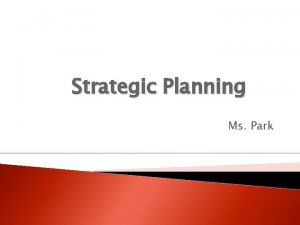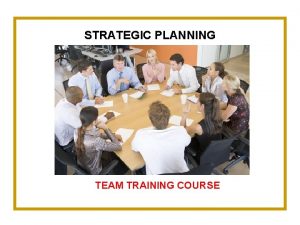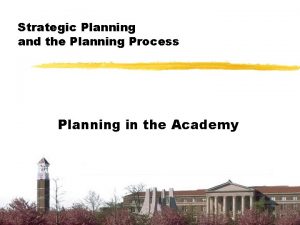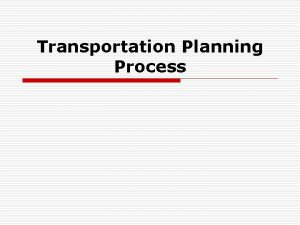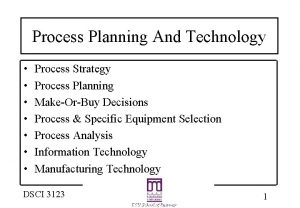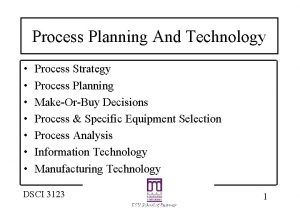TRAINING ON DEPEDs STRATEGIC PLANNING CONTENT PROCESS July























- Slides: 23

TRAINING ON DEPED’s STRATEGIC PLANNING CONTENT & PROCESS July 29 -August 2, 2013 Dep. ED RO 2 Conference Hall Carig Sur, Tuguegarao City

Development Assistance Bilateral Development Agenda Government of the Philippines Government of Australia Statement of Commitment Goals and Objectives Delivery Strategies Programme Strategy: The PAHRODF Partner Organizations HROD Interventions

Statement of Commitment Objectives • Building human capital through improved access to and quality of education • Building capacity of local government units to deliver essential service • Supporting peace and development • Strengthening climate change adaptation and disaster risk management • Transparent, accountable and effective governance • Supporting Sustainability and Replication

Department of Education

Objectives After the 5 -day workshop participants will be able to improve and enhance their respective knowledge, skills, attitudes, and confidence in: 1. Developing Vision, Mission, Objectives, Key Result Areas and Performance Indicators; 2. Undertake External Environment Assessment, Internal Organization Assessment, and SWOT Analysis; 3. Formulate Operating plans and action programs, activities and tasks and resources required.

Inputs from Facilitators Present model strat outputs Practice with cases Facilitator Review Team work with coaching Group Review

Morato’s Framework Strategic Planning Framework Using Top-Down Planning and Bottom-Up Planning

VMOKra. Pi. SPATRes

Dep. Ed’s Strategic Planning Process

A. Strategizing is about setting institutional goals and finding the best means to reach those goals. B. Strategizing bridges the chasm between where an organization is today and where it wants to go tomorrow. C. Strategies are the best means by which an organization achieves its desired ends. ORIGIN STRATEGY DESTINATION

Adaptive Strategizing Adaptive strategists take opportunities as they come along Also known as incremental strategizing Or strategizing by muddling through

Rational, Sequential and Analytical Strategizing

There are usually two sequential processes taken in the rational approach. The first sequence is from the top to the bottom. ØIn the top-down sequence, the strategist draws a clear picture of where he or she wants the organization to go. ØThis is the organizational vision. ØA vision is an idealized state desired three, five or ten years down the strategic road.

ØThe strategist then articulates the reason for being or basic purpose for establishing the organization. ØThis is called the mission statement core values often accompany the mission statement. ØFrom the vision and mission, the strategist goes further down to objectives, which are measurable end-results that determine whether the organization is getting close or farther from its goals. ØEach objective is then translated into key result areas (KRAs) which are specific manifestations that the objective is being attained.

ØThe KRAs, which are qualitative statements, are then quantified into nononsense performance indicators (PIs). ØBased on the PIs, the organization then generates alternative strategies which can be employed to achieve these PIs. ØThe strategies are broken down into action programs, which are, in turn, cascaded into group activities and individual tasks. ØFinally, the resources required to deliver the strategies, programs, activities and tasks (SPAT) are spelled out.

The second sequence usually taken in the rational approach is from the bottom up. ØThe strategist grounds the organization to the realities of the environment it operates in. ØThere are two grounding environments: the external environment which is the area, industry or sector affecting or being affected by the organization; and, the internal environment which is the organization itself. ØThe internal environment is composed of the resources, manpower, systems, processes, capabilities and constraints of the organization itself.

ØIn the second sequence, the strategist must be able to determine the opportunities and threats (OT) in the external environment in relation to its vision, mission and objectives (VMO). ØThe strategist must also be able to distill the strengths and weaknesses (SW) of the organization according to the same vision, mission and objectives. ØNext, the strategist juxtaposes the opportunities and threats (OT) from the external environment with the strengths and weaknesses (SW) of the internal environment in relation to the vision, mission and objectives (VMO) of the organization. ØThe result of this juxtaposition is the SWOT matrix shown in Diagram 4.

Rational Strategizing First Sequence Vision Second Sequence Mission Strategies SWOT Objectives KRAs PIs Strategy Internal Environment (the organization) External Environment (area, industry or sector)

VMOKra. Pi. SPATRes


Adaptive vs Evidence-based

Why do we need to move from adaptive to evidence-based? 1. Come up with responsive strategies. 2. Make global breakthroughs in education. 3. Make use of the significant data that we have.

What is the basis of your strategy? EXTERNAL INTERNAL
 Strategic planning vs tactical planning
Strategic planning vs tactical planning What is retail planning
What is retail planning Strategic marketing process
Strategic marketing process Objectives of retailing
Objectives of retailing Army strategic planning guidance 2021
Army strategic planning guidance 2021 Paf paradigm
Paf paradigm Strategic planning process suffolk
Strategic planning process suffolk Business unit strategic planning process
Business unit strategic planning process Types of corporate strategy
Types of corporate strategy What is esp
What is esp Dynamic content vs static content
Dynamic content vs static content Strategic fit vs strategic intent
Strategic fit vs strategic intent Puppy dog ploy
Puppy dog ploy Industrial organization model of above average returns
Industrial organization model of above average returns Strategy analysis and choice largely involves making
Strategy analysis and choice largely involves making Audit memorandum meaning
Audit memorandum meaning Team building workshop modules
Team building workshop modules A strange day in july picture
A strange day in july picture Uninvited guests harris burdick
Uninvited guests harris burdick July 1-4 1863
July 1-4 1863 Tender definition
Tender definition Criciúma ec
Criciúma ec 2001 july 15
2001 july 15 2003 july 17
2003 july 17

